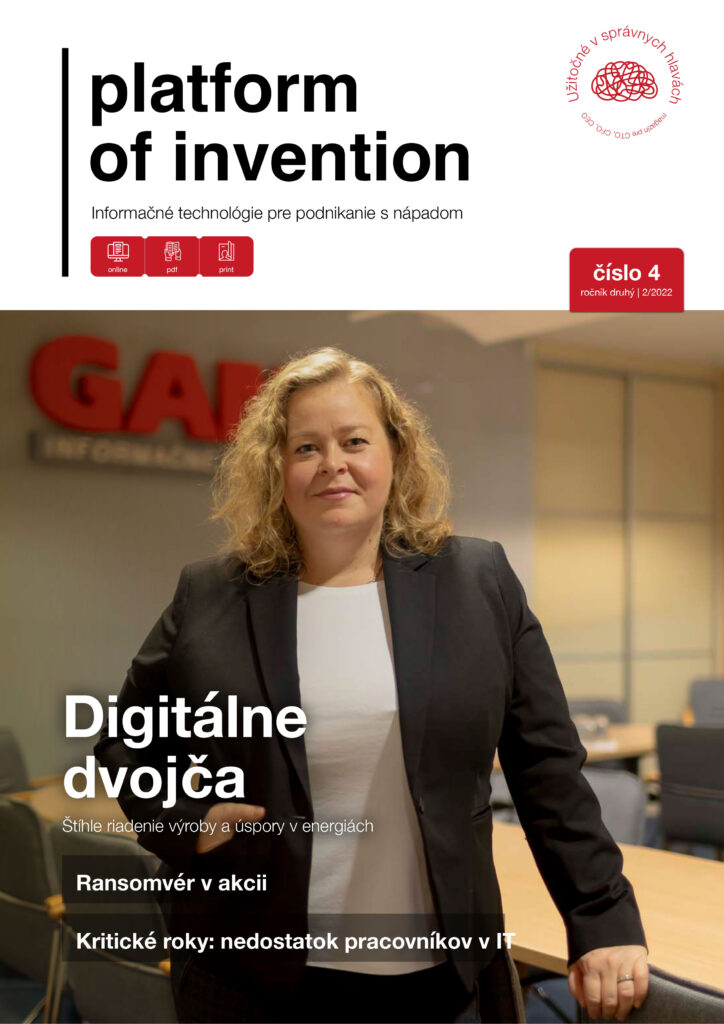The digital world is still plagued by a shortage of workers in the information technology sector
In Slovakia, there is open talk of a human resources crisis. And it concerns not only the health and teaching sector, but also the informatics and digital skills sector. Up to 54 percent of university graduates do not work in their field of study after graduation. Up to 68 per cent of vocational secondary school graduates do not continue with their chosen studies. Companies have long perceived that finding skilled workers is a difficult task. The reasons for this, according to experts, are poorly set school curricula and the abolition of compulsory apprenticeships.
Is that right? Let’s sort out the numbers, facts and opinions without value judgments. Ivan Dolnák from FEIT University of Žilina says: “The relationship between Slovak education and its connection to practice is marked by self-deception. Self-deception on the part of education and on the part of the corporate sector. Education mistakenly thinks that it prepares graduates for practice, and the corporate sector thinks that education can produce the perfect graduate ready to tackle any job role. But the reality is that the average graduate is at most the level of their teacher and few can exceed it.”
Numbers from practice
In the Labour Market Yearbook 2021, IT is rated as the sector with the lowest average number of responses to a job offer, equal to 5.
For example, the IT company GAMO did 26 competitions for 16 positions last year. In addition to standard channels such as Profesia.sk, LinkedIn and career websites, it used the services of recruiters and reputable recruitment agencies. However, on average, only 19 candidates applied for one job position from all sources and 3 positions are still vacant.
In the end, it turned out that the greatest success rate was the recommendation of a colleague (up to 55% of cases), followed by agencies (30%) and finally Profesia.sk (15%).
Figures from ITAS
Roughly 12,500 IT workers were already missing in practice in 2015, and the number is steadily increasing in a negative direction. One of the most serious reasons is still considered to be educational – according to ITAS, we have only five faculties in Slovakia that can be considered IT, three “hard” and two “soft” IT, and then a few faculties or departments of economic informatics qualified in the IT field as “soft”.
And it is the different quality of IT teaching in schools that affects the digital competences of students, according to the results of the IT Fitness Test 2022, which involved up to 100 thousand respondents from the V4 countries. Based on these results, ITAS experts say that schools need to focus more on developing critical thinking, evaluating information and assessing its quality, credibility and truthfulness.
ITAS Vice President Mario Lelovsky understands that understaffing starts with teachers. He personally tries to bring expatriate Slovaks back to Slovakia to teach in local schools. “About 40 or 50 of them have returned, but the problems are, of course, the salary and the general environment. When companies on average pay programmers 2,500 Euros, an experienced computer scientist will not go to teach at a school for 1,000 Euros,” he admitted to StartitUp.
It is important to push for school teachers to be paid more than company employees.
Voices from Technical University in Košice
Miroslav Michalko, the head of the Computer Networking Laboratory at KPI FEI TUKE, says that he does not dare to generalize whether the whole education is bad or good. “It depends a lot on the specific universities, also on the level of the departments and teachers who work there,” he explains. The IT field is a very fast-moving market segment, and it is somewhat naive to expect universities to implement all trends into teaching at once. “The aim of schools is to teach students the deeper fundamentals of the subject, help them understand the context, be able to make decisions based on proper evaluations and understanding of the inputs. Only practice will target them more precisely, training them for specific solutions or requirements of their future customers.” Training students in a way that employers can use them immediately is therefore an idealised expectation rather than an achievable reality for any school. Although even here we are already seeing changes to progress with the emergence of new degree programmes. For example, the Faculty of Electrical Engineering and Informatics of TUKE has established a Cyber Security degree programme, and several courses have content compatible with the requirements of industry certifications, which is an indication of their relevance to the trends and needs of companies.
“This does not mean that there is no room for improvement, on the contrary. But with such requirements goes hand in hand the requirement to strengthen human and technical resources, and there is the first weakness of the current system,” says Miroslav Michalko. “Secondary schools are struggling acutely with an acute shortage of IT specialists – teachers. In each region, local employers are able to overpay for these specialists. Often only enthusiasts who are motivated by the mission, the job of a teacher, remain in schools.”
They must have the patience of a saint, moreover, and confirm that today’s students are not as they once were, their perceptions are more fragmented and their interest is waning. Ondrej Kainz from FEI TUKE also considers demotivation of students to be a big problem of the time: “It is difficult to motivate them, especially after the period when education has been moved to the online plane. Most of them just need to meet the minimum requirements for passing a subject or course, which reduces the quality and the knowledge remains at an average level. Of course, there was a similar phenomenon in the past, but nowadays the percentage of such students is enormously high.”

Background
The voices calling for reform of the system have been heard from all sides for years. The message is that it cannot be expected to happen, and everyone must get involved. Primary schools are working with secondary schools, businesses and colleges are joining together, dual education was a successful project before the crown and needs to be continued. Linking school and practice is what can save even the disinterest or apathy on the part of students. Real assignments in companies using the technologies that are the subject of their studies produce real positive results. “Linking the academic environment with the corporate environment through various joint project activities, final theses, shared workplaces, brings students not only to modern technologies – which they may not be able to access by default – but also allows them to better understand internal company processes, communication with customers or even project management,” confirms Peter Feciľak from the Department of Computers and Informatics of the Faculty of Computer Science of the Charles University of Economics and Technology of Economics. “What schools cannot give, employers can often replace,” agrees Miroslav Michalko, head of the computer networking laboratory. “Dual education is a proven model that helps educate not only more skilled but also more motivated students. For many students, it already helps them decide in high school what they want to do in life. And getting motivated students is a win for any educator.”
A significant benefit at dozens of technical high schools in this process is the implementation of the Cisco Networking Academy Program, whose content is aligned with industry certifications and employer requirements, plus generates quality and proficient teachers.
“It is already common for a significant percentage of students to work while studying at technical universities. We can argue about the advantages or disadvantages of this reality – but in any case, graduating students are much better prepared for practice than they used to be. Overall, there has been a markedly positive development in the area of cooperation between schools and practice. Companies are often no longer looking at universities as a source of employees, but are looking for forms of cooperation on joint projects – including through science park schemes such as the University Science Park TECHNICOM, or innovation HUBs such as EDIH CASSOVIUM,” concludes Miroslav Michalko.
With GAMO in practice
Such cooperation has been established in the Banská Bystrica region, for example by the IT company GAMO. The Jozef Gregor Tajovský Primary School in Banská Bystrica is one of the few high-quality schools that continuously innovate educational methodologies and technical equipment and cooperate with secondary schools, universities and companies. GAMO provides cybersecurity, educates employees in new technologies, conducts awareness and support programs for parents, and participates in material support.
At the same time, the memorandum promotes a spiral of education between primary school, vocational high school, technical college types and, in the final, with a specific company. “The goal is for children to have an education, and at the same time the motivation to stay in the region or return to it and work in a company they already know thanks to the cooperation in the teaching system,” confirms Rudolf Latiak, Executive Director of GAMO, a. s., Rudolf Latiak.







